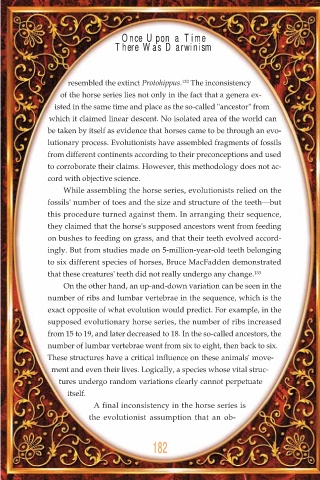Page 184 - Once Upon a Time There Was Darwinism
P. 184
Once Upon a Time
There Was Darwinism
resembled the extinct Protohippus. 132 The inconsistency
of the horse series lies not only in the fact that a genera ex-
isted in the same time and place as the so-called "ancestor" from
which it claimed linear descent. No isolated area of the world can
be taken by itself as evidence that horses came to be through an evo-
lutionary process. Evolutionists have assembled fragments of fossils
from different continents according to their preconceptions and used
to corroborate their claims. However, this methodology does not ac-
cord with objective science.
While assembling the horse series, evolutionists relied on the
fossils' number of toes and the size and structure of the teeth—but
this procedure turned against them. In arranging their sequence,
they claimed that the horse's supposed ancestors went from feeding
on bushes to feeding on grass, and that their teeth evolved accord-
ingly. But from studies made on 5-million-year-old teeth belonging
to six different species of horses, Bruce MacFadden demonstrated
that these creatures' teeth did not really undergo any change. 133
On the other hand, an up-and-down variation can be seen in the
number of ribs and lumbar vertebrae in the sequence, which is the
exact opposite of what evolution would predict. For example, in the
supposed evolutionary horse series, the number of ribs increased
from 15 to 19, and later decreased to 18. In the so-called ancestors, the
number of lumbar vertebrae went from six to eight, then back to six.
These structures have a critical influence on these animals' move-
ment and even their lives. Logically, a species whose vital struc-
tures undergo random variations clearly cannot perpetuate
itself.
A final inconsistency in the horse series is
the evolutionist assumption that an ob-
182

